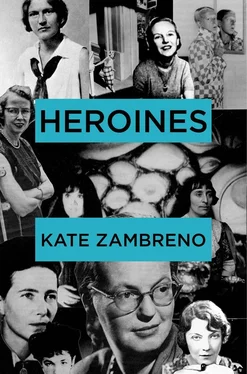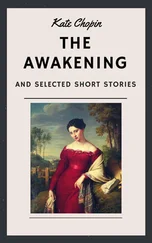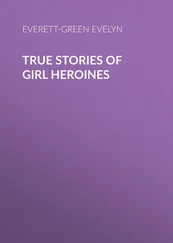Days it takes the jaws of life to get me out of bed. He tries different tacks. He wrestles me or cajoles me lovingly into the shower. He walks me. He waters me. Like a dog or a plant.
(How we can infantilize each other. We are each other’s babies. Baby. We say. We play good and bad mommies. Good and bad daddies.)
Is it as bad as all that? I suppose it is. I wonder when the fog will lift, if the fog will lift. I am supposed to keep calm. Just like the heroine in “The Yellow Wallpaper.” Must not be overwrought. Beyond the melancholy and fatigue there are the (accompanying?) physical disturbances. The sinus pain. The terrible stomach spasms, acid reflux, irritable bowel. (Viv’s, Zelda’s explosive colitis.)
I have been told by my family doctor in Akron who resembles Orville Redenbacher that I have caused this bodily coup through emotional stress (he is so certain of this). So I am bitter as the bile I taste at John. I am ordered to eat only bland foods, nothing that makes the tedium a little less oppressive.
Leonard Woolf was the documentarian of his wife’s illness. “Leonard made Virginia’s illness one of his life’s works…” Extensive “entries on her daily states of mind are coded in Tamil and Sinhalese.” Scott’s life ledger, his meticulous coding of Zelda’s days. Tom writing of the state of Viv’s bowels vividly in letters. These men were caretakers of their invalid wives. They elaborately recorded their wives’ symptomry.
John who wifes me, who Leonard Woolfs me. He who enabled her. Her continued genius was the centerpiece of their life together. (Did he also disable her?) Paul on Jane: “Our combined world orbited around the subject of her poor health. Each week she seemed to have a new symptom to add to the old ones; the horizon of her illness was slowly widening.”
My invalid dependent wife
T.S. Eliot repeated this over and over again in his letters. Ad nauseum (oh yes, the nausea). He exaggerated Vivien(ne)’s symptoms, confused them at times with his own. But he was the Great Poet, she merely a sick woman. As if planning a future, escape route, corralling sympathies. Even though she too nursed him through his maladies.
“The emphasis was always on Vivien’s illnesses, which appear mysterious.”
Colitis, fever, migraines, rashes, insomnia, exhaustion, cloudiness — but how to separate the cure from the disease? Hallucinations from the bromides and chloral, given in huge draughts to make women walk around like zombies. (Prince Chloral, Virginia dubbed these woozy visions.)
My irritable bowel. My raging periods. My howling headaches. Our maladies speak crassly and loudly for us when we are supposed to be calm.
Perhaps I am not just Emma, sensualist, solipsist. I am also the first Mrs. Bovary — Yes more love! More tonic and more love! Mme. Bovary #1’s crime seems to be her nerves and lack of style. The shawl over her bony shoulders, her skirts too short.
The first Madame Bovary…the first Mrs. Rochester…the first Mrs. Eliot. So much of Viv’s story like Bertha Mason’s — the brother-betrayer scheming with the husband, all the Darwinian discourse around inheritance and lunatic women.
Bertha Mason in Charlotte Brontë’s Jane Eyre described by Rochester as the “true daughter of an infamous woman.” Insanity thought to be hereditary, passed down from mother to daughter. Virginia and Viv encouraged not to have children.
(I think of all that we have inherited.)
The narrative told about Vivien(ne) is that she was delicate, the sickly sort. She had been told this from childhood. Jane Bowles sickly too after having TB of the knee. As a teenager she recovered in a Swiss sanitorium. Viv also had childhood TB of the bone.
Her messy periods, a sign of feminine disorder in the 19th century. (In order to ensure normalcy, periods were often delayed as much as possible using a range of remedies, including cold showers.)
Corset and corsetting. Jane and Viv. The nervous girls. Stress cadets. They felt it all so intensely on their body. Both married men who grew icy or paralyzed the more feverish and effusive their wives got. (He is cold on the phone. I grow hot. He freezes up.)
A young Jane Bowles so bourgie and pampered, in her prim little dresses, her hat and gloves (she’d forget them in the cab on the way to the Village). Bendel’s and Bergdorf Goodman. A maid who changed her pocketbooks. Her nails and hair done twice a week. The Haigh-Woods (Viv’s family) wearing full-dress tuxes to dinner, supping solemnly on soup (well, if you believe the film version). I am trying to conjure up an atmosphere of oppression. Of being good. Of being silenced. The “half-confinement” of the hysterics Cixous writes about.
Their panopticon mothers. They never let them out of their sight for long. Admonishing them to be good, to behave. And perhaps one got married to escape one’s childhood, one’s family. To escape one’s mother. For a sense of adventure. Through marriage, not war or kingmaking. And then to find oneself right back in, perhaps worse. The husband is also a father. To act out — what does that even mean? It sounds suspiciously like acting (as oppposed to being passive, a doll). Created as characters. They learn to play a role. The spastic girls.
“Moreover, Rose told Vivienne, as she gave her her ‘doses,’ that she was sick. The label seemed to fit, and increasingly Vivie acted out this role by indulging in temperamental outbursts and crying fits.”
Virginia and Vivien(ne) were told by their families and their doctors that they suffered from “moral insanity,” a label often assigned to girls who somehow rebelled against their confined gender role (often promiscuity, in behavior or in one’s body maturing early).
All these theories of what to do with bad girls, to rewrite and name the narrative (everything then becomes symptomatic not of their conditions but of the illness). It was the EGO that was thought to get in the way of smoothing back into one’s accepted social role and creating such chaotic unhappiness. Bad to have an ego. One must exercise self-control.
In his History of Madness , Michel Foucault traces how in the 17th century, the beginning of the so-called Age of Reason, madness became an object to consider, categorize, and classify, as opposed to an experience. The discourse around madness gradually became less one of criminality (the solution being physically restraining bodies in the asylum) than one of morality, disciplining and controlling minds and passions while in confinement. By the end of the 19th century the moral discourse became wrapped around a medical discourse. Under Phillippe Pinel’s control the French asylum espoused physical discipline and a detailed schedule as a way to become well again. This philosophy of traitement morale , or moral management.
This idea that one must control oneself and stop being so FULL of self remains a dominating theory around mental illness, and, perhaps tellingly, around other patriarchal laws and narratives, including the ones governing and disciplining literature.
A woman of the Victorian period saw “nerve specialists” who named them as nervous, neurasthenic, having had a “nervous breakdown,” slightly depressed, melancholy or hysterical. “The Yellow Wallpaper” is Charlotte Perkins Gilman’s merciless take-down of the law-making patriarchs with their control of the language, both Husband and Herr Doktors (and all of the men are doctors in the story). In this way it’s a companion text to Virginia Woolf’s Mrs. Dalloway , also a takedown of the medicine men who do ruin instead of good. Both Gilman and Woolf (and Vivien(ne)) were diagnosed and treated in the context of the 19th century language of nerves. (Woolf also mocks doctors and their uninspired language in Mrs. Dalloway , her physician George Savage in particular.)
Читать дальше












